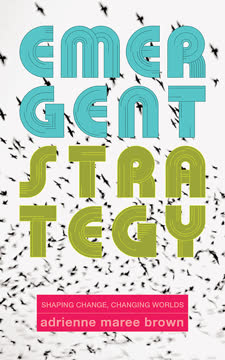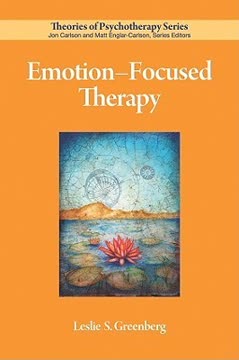Key Takeaways
1. Emotion is the Core Driver of Human Experience and Enduring Change
Rather than “I think, therefore I am,” EFT is based on the idea that “I feel, therefore I am” and proposes that first we feel, and then we think, and we often think only inasmuch as we feel.
Fundamental role of emotion. Emotion-Focused Therapy (EFT) posits that emotions are not merely reactions but are foundational to human experience, serving as the primary motivational system essential for survival and adaptation. Emotions rapidly appraise situations for their relevance to our well-being, guiding our perceptions, cognitions, and behaviors. This perspective emphasizes that deep, lasting psychological change is rooted in emotional transformation, not just cognitive or behavioral shifts.
Adaptive potential. Emotions possess an innate adaptive potential, acting as an internal compass that alerts us to our needs and prepares us for action. For instance, fear signals danger, sadness informs us of loss, and anger indicates a violation. Accessing and understanding these primary emotions allows individuals to tap into crucial information about themselves and their world, enabling them to respond more vitally and adaptively.
Beyond conscious understanding. EFT challenges the traditional overemphasis on conscious understanding and cognitive restructuring, arguing that while meaning-making and behavioral change are important, they are often secondary to the visceral experience and transformation of emotion. The therapy helps clients become more skillful in:
- Awareness and acceptance of emotions
- Flexible management of emotional states
- Utilizing emotions for information and action
- Corrective emotional experiences
2. The Therapeutic Relationship Provides the Essential Foundation for Emotional Work
At the center of this approach is an I–Thou therapy relationship based on principles of presence, empathy, acceptance, and congruence.
Curative relationship. EFT emphasizes that a genuinely valuing, affect-regulating, and empathic relationship with the therapist is not just a backdrop for therapy but is curative in itself. The therapist's presence, attunement, and sensitive responsiveness create a safe environment that fosters:
- Breaking of isolation
- Validation of the client's experience
- Strengthening of the self
- Promotion of self-acceptance
Affect regulation and safety. This secure relationship provides a powerful buffer against the client's distress through coregulation of affect. The therapist's attuned mirroring helps clients regulate overwhelming and painful emotions, which over time, becomes internalized as self-soothing capacity. This interpersonal soothing is crucial for clients to feel safe enough to engage in deep self-exploration and new learning.
Collaborative alliance. Beyond empathy, establishing a strong working alliance is vital, involving collaboration on therapy goals and tasks. This collaboration is an enactment of empathy, demonstrating the therapist's understanding of the client's needs and what will be helpful. This shared effort reinforces the client's experience of working together to overcome problems, often by focusing on resolving chronic emotional pain rather than just behavioral symptoms.
3. Psychological Dysfunction Stems from Unprocessed Emotions and Maladaptive Schemes
Dysfunction is seen as arising through a variety of different emotional mechanisms, such as lack of emotional awareness, avoidance, or disclaiming of emotional experience; learned maladaptive emotion schematic memories; the creation of narratives that are overly rigid or dysfunctional (meaning creation); conflict between two emotionally based parts of the self; and unresolved feelings between self and other.
Multiple pathways to distress. EFT views psychological dysfunction not as a singular issue but as emerging from several interconnected emotional difficulties. These include:
- Lack of emotional awareness: Inability to symbolize or make sense of bodily felt experience, leading to a deprivation of valuable adaptive information.
- Avoidance or disclaiming: Nonacceptance of emotions, whether due to skill deficits, denial, or fear, prevents integration of experiences into the self.
- Maladaptive emotion schemes: Overlearned, often traumatic, emotional responses that no longer serve a constructive purpose in current situations.
Impact of early experiences. If early emotional experiences are met with problematic responses from caregivers, core maladaptive emotion schemes develop. For example, a child who experiences abuse may associate closeness with fear, leading to maladaptive anger or rejection in intimate relationships later in life. This can result in feelings of worthlessness, insecurity, or abandonment.
Dysregulation and narrative problems. Dysfunction also arises from the inability to regulate emotions, leading to either being overwhelmed by intense feelings or becoming numb and distant from them. Many symptoms, such as depression, anxiety, and addictive behaviors, are often dysfunctional attempts to manage underlying emotional states. Furthermore, rigid or incoherent narratives about oneself and the world, ungrounded in bodily experience, perpetuate distress and block adaptive identity development.
4. Emotion Schemes Act as Internal Blueprints, Shaping Our Automatic Reactions
Emotion schemes are at the base of the adult emotional response system. They are internal emotion memory structures that synthesize affective, motivational, cognitive, and behavioral elements into internal organizations that are activated rapidly, out of awareness, by relevant cues.
Integrated memory structures. Emotion schemes are complex internal organizations that store memories of significant life experiences, particularly those that evoked strong emotional responses. These schemes integrate:
- Affective components (the feeling itself)
- Motivational elements (action tendencies)
- Cognitive appraisals (tacit evaluations)
- Behavioral responses (how one acts)
They are activated automatically by cues that match their input features, producing a rapid, often pre-conscious, experience and action.
Adaptive yet potentially maladaptive. While emotion schemes make our emotional system flexible and adaptive, they can also become maladaptive. For instance, a child who experienced repeated criticism might develop a scheme where any perceived failure triggers intense shame and a belief of being inherently flawed. This past learning can then override present reality, causing disproportionate emotional reactions to current, less threatening situations.
Guiding information processing. The activation of an emotion scheme sets a basic mode of processing, influencing how an individual perceives and interprets new information. For example, a fear scheme primes the individual to search for danger, while a sadness scheme focuses on loss. EFT aims to activate these schemes in therapy, articulate their output in language, and then explore and reflect on this experience to create new, more adaptive meanings.
5. Therapeutic Change Involves Experiencing, Reflecting On, and Transforming Emotions
Clients do not change their emotions simply by talking about them, by understanding their origins, or by changing beliefs; rather, emotions are changed after they are accepted and experienced, opposed with different emotions to transform them, and reflected on to create new narrative meaning.
Beyond intellectual understanding. EFT posits that genuine emotional change requires more than just intellectual insight into one's feelings or their origins. It necessitates a direct, visceral engagement with the emotion itself. The process involves:
- Awareness: Becoming fully present to and symbolizing the emotion in words.
- Acceptance: Allowing the emotion to be felt without judgment or avoidance.
- Expression: Overcoming constriction to express previously avoided primary emotions.
A sequence of processing. Optimal emotional processing in EFT follows a sequence: clients are encouraged to approach, arouse, and tolerate their emotional experiences. This is not mere catharsis, but a deliberate engagement that allows the emotion to be fully felt and its message heard. This process is crucial because what is disowned or split off cannot change; only when an emotion is truly felt can it become amenable to transformation.
Integration of head and heart. After experiencing and expressing the emotion, clients are guided to reflect on it. This reflection helps to:
- Make narrative sense of the experience
- Integrate it into their ongoing self-narratives
- Create new meaning that promotes psychological health
This dialectical process of feeling and thinking allows for a deeper, more coherent understanding of oneself and one's experiences, leading to enduring change.
6. Maladaptive Emotions are Best Transformed by Activating Opposing Adaptive Emotions
I suggest that maladaptive emotional states are best transformed by undoing them by activating other more adaptive emotional states.
Emotion changes emotion. A cornerstone of EFT is the principle that maladaptive emotions are not simply purged or attenuated through exposure, but are actively transformed by the coactivation of other, more adaptive emotional states. This process goes beyond mere tolerance; it involves introducing a new, incompatible emotional experience that "undoes" the old, problematic response. For example, the tendency to withdraw in shame can be transformed by the forward thrust of empowering anger or the self-compassion of sadness.
Accessing new resources. This transformation often involves accessing previously unexpressed or suppressed adaptive emotions that were present in the original situation or are now felt as a healthy response. For instance:
- Maladaptive fear of abandonment can be transformed by adaptive anger at violation or by self-soothing sadness and a need for comfort.
- Core shame can be undone by accessing anger at unfair treatment, self-compassion, or a sense of pride and self-worth.
- Hopelessness can be countered by the mobilization of assertive anger.
Memory reconsolidation. This process is thought to work through memory reconsolidation, where activated maladaptive emotion schemes from the past are restructured by new emotional experiences in the present. By being re-activated in a safe therapeutic relationship and combined with more adaptive emotional responses and adult understanding, old memories are reconsolidated in a new, healthier way, effectively "changing the past."
7. EFT Utilizes Specific Markers to Guide Tailored Interventions for Emotional Processing
Client markers not only indicate the client state and the type of intervention to use but also the client’s current readiness to work on this problem.
Process-diagnostic approach. A defining feature of EFT is its marker-guided intervention strategy. Therapists are trained to identify specific "markers"—in-session statements or behaviors that signal underlying emotional problems and opportunities for particular types of effective intervention. These markers act as a "pain compass," directing both client and therapist to the core issues.
Tailored interventions. Each marker indicates a specific client state and suggests a corresponding therapeutic task or intervention:
- Problematic reactions (puzzlement over emotional responses) call for systematic evocative unfolding to connect situation, thoughts, and feelings.
- Unclear felt sense (confusion about internal experience) calls for focusing to help clients articulate their bodily felt sense.
- Conflict splits (one part of self opposing another, e.g., self-criticism) call for two-chair dialogue to bring parts into direct contact.
- Self-interruptive splits (constricting emotional expression) also use two-chair enactment to make the interruption explicit and challenge it.
- Unfinished business (lingering unresolved feelings toward a significant other) calls for empty-chair dialogue to process emotions and unmet needs.
- Vulnerability (fragility, deep shame, insecurity) calls for affirming empathic validation to strengthen the self.
Dynamic and responsive. This approach ensures that interventions are not generic but are precisely matched to the client's immediate emotional processing needs and readiness, fostering a dynamic and responsive therapeutic process.
8. Meaning-Making and Narrative Construction are Vital for Self-Coherence and Growth
The capacity to construct narratives, understand, and integrate our most important life stories is key to adaptive identity development and the establishment of a differentiated, coherent view of self.
Beyond raw emotion. While emotions provide crucial information, the human drive to make sense of these emotions and integrate them into a coherent life story is equally vital. Meaning-making is a fundamental motivation, helping individuals navigate suffering and find purpose. When emotions are symbolized in words and woven into narratives, they gain conscious meaning, allowing for more differentiated behavior and a stronger sense of identity.
Narrative as an organizing process. Narratives provide a cognitive framework, a "temporal Gestalt," that organizes individual life events and actions into a meaningful plot or theme. This process helps to:
- Order experience
- Provide a sense of identity
- Overcome existential vacuums
Problematic narratives, such as those of violation or loss, can perpetuate distress, while the creation of new, more coherent narratives can transform understanding and promote healing.
Dialectical construction of self. The self is seen as a dynamic system, constantly synthesizing internal affective experiences with external linguistic and cultural influences. This dialectical process involves reflecting on implicit feelings to create explicit meaning, which in turn shapes beliefs, self-representations, and narratives. This ongoing dialogue between lived experience and told story allows for the continuous revision and integration of different aspects of the self, fostering growth towards greater complexity and coherence.
9. Emotion-Focused Therapy is an Empirically Supported Treatment for Diverse Disorders
EFT has been shown to be effective with individuals and couples in a number of randomized clinical trials.
Robust evidence base. EFT has undergone extensive research, establishing its efficacy across various populations and psychological disorders. Randomized clinical trials have demonstrated its effectiveness in treating:
- Depression: EFT has been found to be as effective as, or more effective than, client-centered and cognitive-behavioral treatments, particularly in reducing interpersonal problems and preventing relapse, with a 70% non-relapse rate at 18-month follow-up in some studies.
- Anxiety Disorders: Promising results are emerging for generalized anxiety disorder (GAD) and social anxiety disorder (SAD), with studies showing significant improvements in symptoms and self-criticism.
- Eating Disorders: Preliminary evidence supports EFT for binge-eating disorder and bulimia nervosa, with improvements in binge episodes, mood, emotion regulation, and self-efficacy. Emotion-Focused Family Therapy (EFFT) is also showing promise for children and adolescents.
Resolving emotional injuries. EFT has proven superior to psychoeducation in facilitating forgiveness and letting go of unresolved anger and hurt from past betrayals or abandonments. Emotion-Focused Trauma Therapy (EFTT) for adult survivors of childhood abuse has also shown significant improvements across multiple domains of disturbance, with effects maintained at follow-up.
Couples therapy success. Emotionally Focused Couples Therapy (EFT-C) is recognized as one of the most effective approaches for resolving relationship distress, demonstrating a high effect size and recovery rates between 70% and 73% in meta-analyses. It helps partners access and express underlying attachment- and identity-oriented emotions, leading to increased marital satisfaction and forgiveness.
10. Emotion Coaching and Literacy are Crucial for Prevention and Enhanced Well-being
One of the most pressing needs is the development of preventive programs training people to become more emotionally literate.
Beyond treatment, towards prevention. EFT's principles extend beyond clinical treatment to advocate for broader preventive programs focused on emotional literacy. This involves training individuals to enhance their emotional competence, enabling them to better understand, manage, and transform their emotions in daily life. Such programs aim to equip people with skills to:
- Identify and differentiate emotional states
- Regulate and self-soothe distressing emotions
- Utilize emotions as valuable information
- Articulate feelings effectively
Cultivating emotional intelligence. Emotion coaching programs are highly needed, particularly for adolescents and young adults, as emotions often become problematic during these developmental stages. These programs would provide experientially based psychoeducation on how to use, manage, and change emotion, fostering a new way of thinking about emotional experiences. This proactive approach can lead to greater resilience and adaptive functioning.
Impact on future generations. A crucial entry point for this training is with parents, teachers, and managers, as their "emotion philosophy" significantly influences the emotional intelligence of children and the work environment. Parents who are "emotion coaches"—approaching their children's emotions with compassion and as opportunities for intimacy—tend to raise emotionally intelligent children. By training adults in these roles, we can foster a more emotionally literate society, promoting harmony within individuals and among people.
Last updated:
Review Summary
The book "Emotion-Focused Therapy" receives positive reviews, with readers praising its comprehensive overview of the author's work. Reviewers appreciate the theoretical foundations and practical strategies for working with emotions. The approach is noted for its grounding in neuroscience and strong evidence base. Some readers find the content dense and wish for more case examples. Overall, it's considered a valuable resource for those interested in emotion-focused therapy, though it may be more theory-focused than practical application.
Similar Books










Download PDF
Download EPUB
.epub digital book format is ideal for reading ebooks on phones, tablets, and e-readers.





